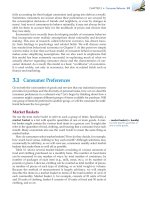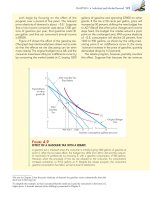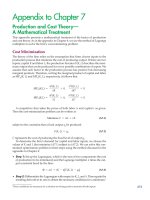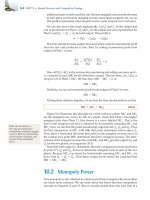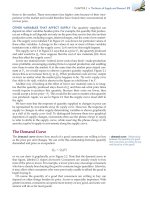(8th edition) (the pearson series in economics) robert pindyck, daniel rubinfeld microecon 267
Bạn đang xem bản rút gọn của tài liệu. Xem và tải ngay bản đầy đủ của tài liệu tại đây (83.91 KB, 1 trang )
242 PART 2 • Producers, Consumers, and Competitive Markets
Note that the largest cost components for an aluminum smelter are electricity and the cost of alumina; together, they represent about 60 percent of total
production costs. Because electricity, alumina, and other raw materials are used
in direct proportion to the amount of aluminum produced, they represent perton production costs that are constant with respect to the level of output. The
costs of labor, maintenance, and freight are also proportional to the level of
output, but only when the plant operates two shifts per day. To increase output
above 600 tons per day, a third shift would be necessary and would result in
a 50-percent increase in the per-ton costs of labor, maintenance, and freight.
The short-run marginal cost and average variable cost curves for the smelting plant are shown in Figure 7.2. For an output q up to 600 tons per day,
total variable cost is $1140q, so marginal cost and average variable cost are
constant at $1140 per ton. If we increase production beyond 600 tons per day
by means of a third shift, the marginal cost of labor, maintenance, and freight
increases from $320 per ton to $480 per ton, which causes marginal cost as a
whole to increase from $1140 per ton to $1300 per ton.
What happens to average variable cost when output is greater than 600
tons per day? When q> 600, total variable cost is given by:
TVC = (1140)(600) + 1300(q - 600) = 1300q - 96,000
Therefore average variable cost is
AVC = 1300 -
96,000
q
As Figure 7.2 shows, when output reaches 900 tons per day, an absolute
capacity constraint is reached, at which point the marginal and average costs
of production become infinite.
Cost
(dollars per ton)
F IGURE 7.2
THE SHORT-RUN VARIABLE COSTS OF
ALUMINUM SMELTING
1300
The short-run average variable cost of smelting is constant for output levels using up to
two labor shifts. When a third shift is added,
marginal cost and average variable cost increase until maximum capacity is reached.
1200
MC
1140
AVC
1100
300
600
900
Output (tons per day)

